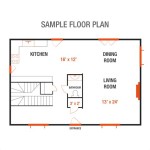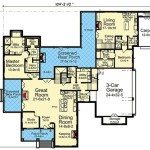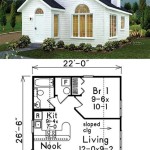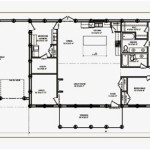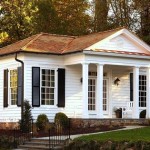Eco-Friendly House Floor Plans: Designing for Sustainability
In the modern era of rising environmental consciousness, eco-friendly design principles are becoming increasingly prevalent in architecture. House floor plans, being the blueprints for our homes, play a pivotal role in shaping the sustainability of our living spaces. This article explores the benefits and key considerations for designing eco-friendly house floor plans.
Benefits of Eco-Friendly House Plans
Eco-friendly house plans offer numerous advantages beyond environmental protection. They can:
- Reduce energy consumption: Efficient designs minimize heat loss and heat gain, leading to lower energy costs for heating and cooling.
- Improve indoor air quality: Proper ventilation and the use of non-toxic materials create healthier indoor environments.
- Enhance natural lighting: Large windows and skylights harness natural light, reducing the need for artificial lighting.
- Lower water usage: Water-efficient fixtures and appliances minimize water consumption.
- Increase property value: Eco-friendly homes are increasingly sought after by prospective buyers, enhancing their resale value.
Key Considerations for Eco-Friendly House Plans
To create truly eco-friendly house plans, several key factors must be taken into account:
Orientation and Siting:
Proper orientation maximizes natural sunlight and breezes, reducing energy requirements. Position the home to optimize solar exposure for heating and lighting, and shelter it from harsh winds.
Building Envelope:
The building envelope, including walls, roof, and windows, should be highly insulated and airtight. This minimizes heat transfer and energy loss.
Passive Solar Design:
Incorporate passive solar design strategies such as thermal mass (e.g., concrete floors) to store heat during the day and release it at night.
Natural Lighting:
Design large windows and skylights to harness natural light and reduce reliance on artificial lighting. Consider the use of clerestory windows and light tubes to distribute light evenly throughout the home.
Energy-Efficient Appliances:
Specify energy-efficient appliances and lighting fixtures to minimize energy consumption. Look for appliances with ENERGY STAR ratings.
Water-Saving Fixtures:
Install low-flow faucets, toilets, and showers to reduce water usage. Consider rainwater harvesting systems to supplement water supply.
Sustainable Materials:
Use sustainable and recycled materials for construction and finishes. Opt for materials with low embodied energy (the energy required to produce them) and high durability.
By incorporating these principles into house floor plans, architects can create eco-friendly homes that enhance sustainability, comfort, and energy efficiency.

Eco Friendly Home Plans House Design

Eco Sustainable House Djuric Tardio Architectes Archdaily
Ecogeneration Luxury Sustainable Modular Homes Ecoliv

Eco Friendly Single Floor Kerala Villa House Design Courtyard Plans
Ecogeneration Luxury Sustainable Modular Homes Ecoliv

House Plan 1 Bedrooms Bathrooms Garage 90101 V1 Drummond Plans

Smart Eco Sustainable Prefab House Charms With Versatile Green Goodness Decoist

Pin On Architectural Presentations Drawings Models Concepts
Floor Plan Arviat Northern Sustainable House Cmhc 2007 P 22 Scientific Diagram

Seco Homes Your Eco Friendly Home Builder For Energy Efficient


